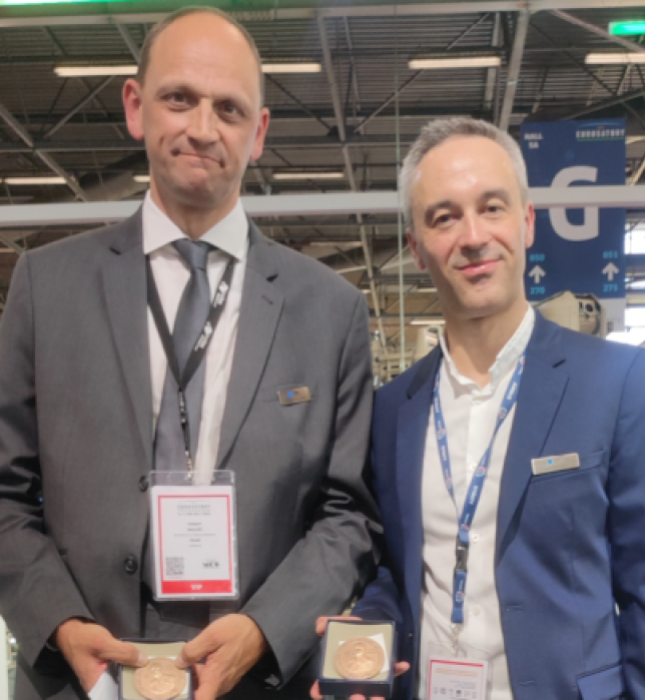CILAS WINS THE «AAT-ENGINEER GENERAL CHANSON 2022»
The 49th AAT – Engineer General Chanson Prize awarded by the Land Armament Association (Assosiaction de l’Armement Terrestre – AAT), is won by CILAS, for its work on the «Neutralization of drones by laser – HELMA-P».
The prize was awarded on June 15, 2022 at Eurosatory by General Pierre SCHILL, Chief of Staff of the French Army (CEMAT) to Tanguy MULLIEZ and David SABOURDY (CILAS).
Drones are a new threat. This threat is complex to deal with, due to the diversity and proliferation of low-cost drones and their increasing autonomy, which makes them immune to jamming.
HELMA-P (High Energy for Multiple Applications – Power) is a laser effector dedicated to anti-drone warfare whose principle is the deposition of calories on a fixed or mobile target, the consequences of which can be: saturating an optical sensor (and thus rendering it inoperative), heating (faulty target electronics), deforming, piercing, cutting or even igniting.The effect on the target, which is up to 1 km away from the end effector, is ensured by means of a power laser and is achieved in a few seconds.
HELMA-P benefits from a number of innovations that will provide forces with a disruptive capability in the coming months. CILAS has demonstrated its ingenuity by, among other things, densifying the laser power on a reduced surface of the target, thus increasing the effectiveness of this new effector.
During tests in Biscarosse on various UAVs with rotating or fixed wings moving according to different approaches – transverse, swooping, ground level – 38 UAVs out of 38 were shot down, up to 1000 m, in a few seconds.
A complete sequence from initial detection to neutralization is possible thanks to a coupling with a radar. The ability to neutralize several drones in sequence has been demonstrated.
Other outlets are imagined for HELMA-P such as the remote neutralization of ammunition and the neutralization of improvised explosive devices.
